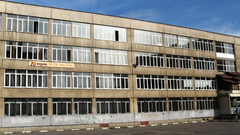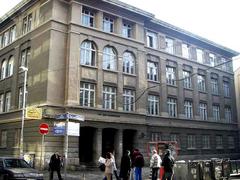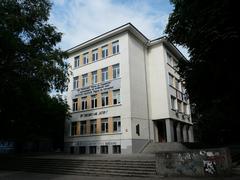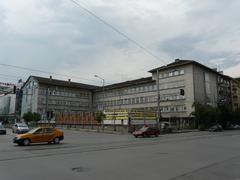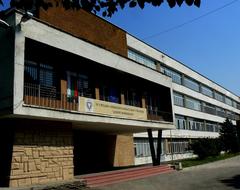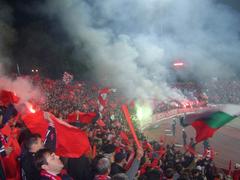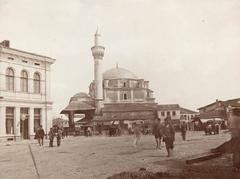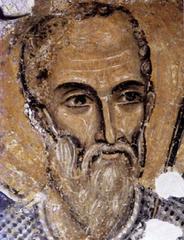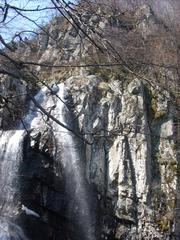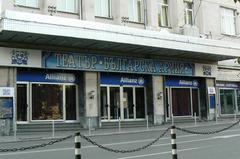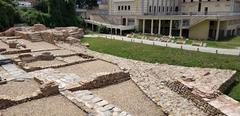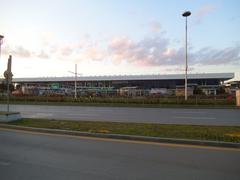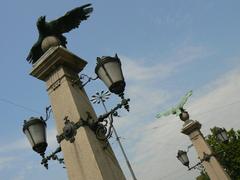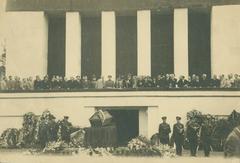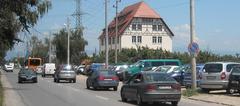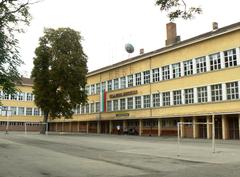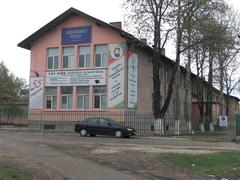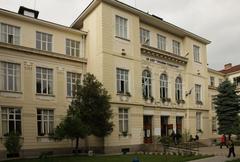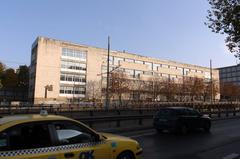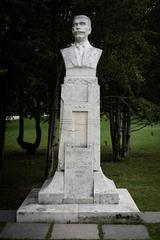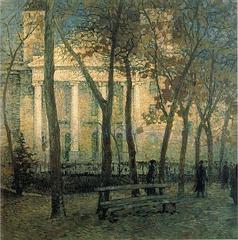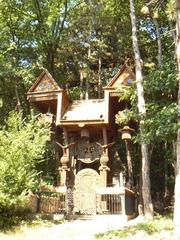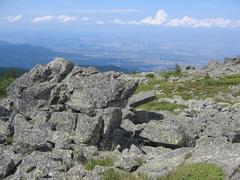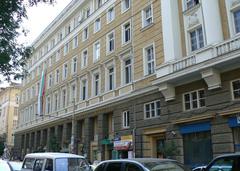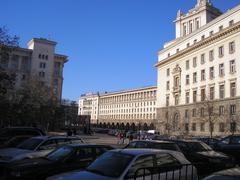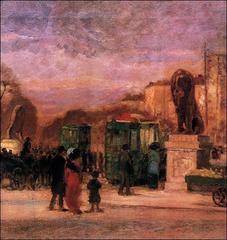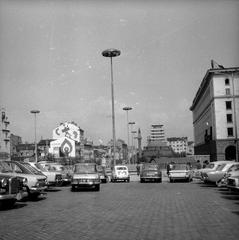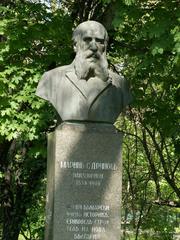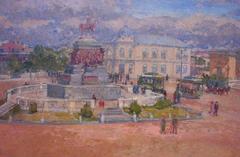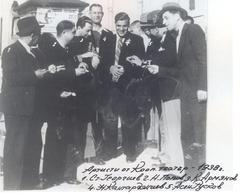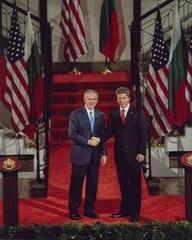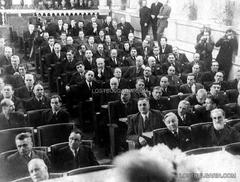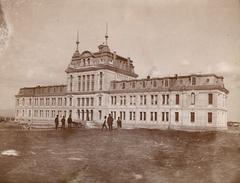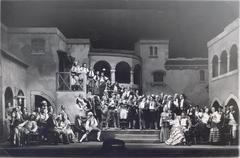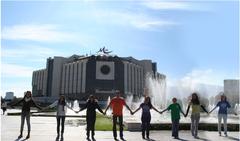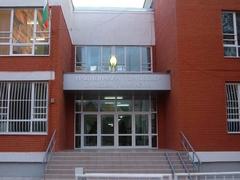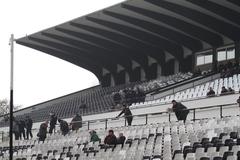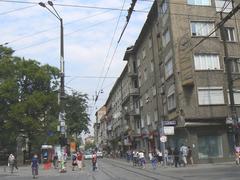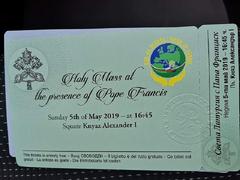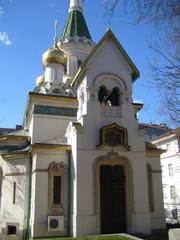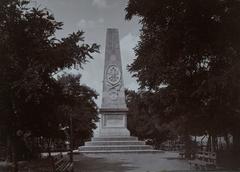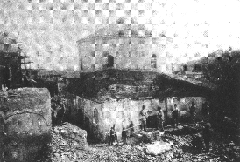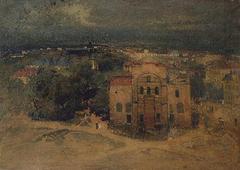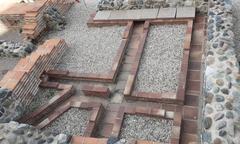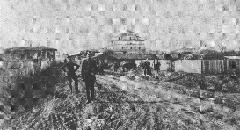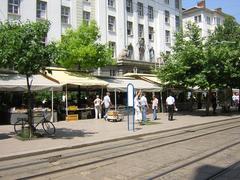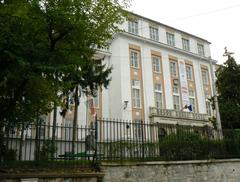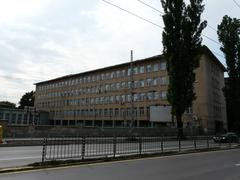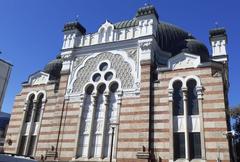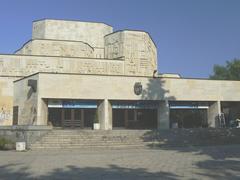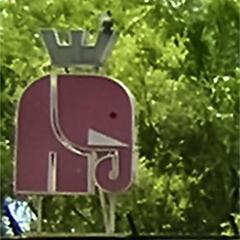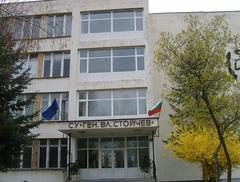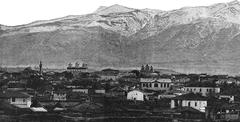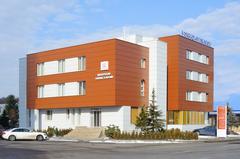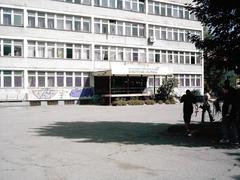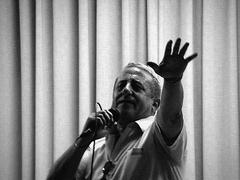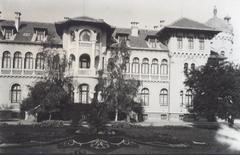Alexandrov Most (Eagles’ Bridge): Visiting Hours, Tickets, and Complete Travel Guide
Date: 04/07/2025
Introduction
Alexandrov Most—commonly known as Eagles’ Bridge (Orlov Most)—is a defining historical and architectural landmark at the heart of Sofia, Bulgaria. Constructed in the late 19th century during Bulgaria’s period of post-liberation modernization, the bridge stands as a symbol of national freedom, resilience, and Sofia’s transformation into a modern European capital. Adorned with distinctive bronze eagle statues and surrounded by significant cultural and civic institutions, Alexandrov Most is not only a functional urban gateway but also a vibrant public space central to Sofia’s social and cultural life. This guide offers a detailed exploration of Alexandrov Most’s history, symbolism, architecture, visiting hours, accessibility, travel tips, and nearby attractions to help you experience one of Sofia’s most iconic sites to the fullest (audiala.com, explorecity.life, The Present Perspective).
Table of Contents
- Origins and Construction
- Symbolism and Architectural Features
- Historical and Cultural Significance
- Evolution and Preservation
- Visiting Hours, Tickets, and Accessibility
- How to Get There
- Practical Visitor Information
- Nearby Attractions
- Frequently Asked Questions (FAQ)
- Travel Tips and Safety
- Conclusion
- References
Origins and Construction
Erected in 1891 amidst a period of rapid urban development following Bulgaria’s liberation from Ottoman rule, Alexandrov Most was designed by Czech architect Václav Prošek and his family, who were also responsible for other prominent Sofia landmarks such as Lions’ Bridge (Lavov Most). Built as part of Sofia’s efforts to modernize its infrastructure and align itself with other European capitals, the bridge stands at a vital crossroads in the city, spanning the Perlovska River and connecting major boulevards.
The bridge’s construction both signaled and facilitated the expansion of Sofia’s urban landscape, serving as a key artery for pedestrian and vehicular traffic as the capital city grew (balkanscountries.info, audiala.com).
Symbolism and Architectural Features
Iconic Bronze Eagles
The bridge derives its name from the four dramatic bronze eagle statues perched on its pillars. Crafted by sculptor Antonín Novák, these eagles symbolize freedom and protection, commemorating Bulgaria’s hard-won independence and embodying national ideals that remain relevant today (evendo.com).
Architectural Style
Alexandrov Most features robust stonework, elegant arches, and decorative ironwork, blending Neoclassical symmetry with Roman-inspired engineering. The use of locally sourced stone and Art Nouveau detailing on the balustrades and lamp posts reflect Sofia’s aspirations for European sophistication at the turn of the 20th century (e-a-a.com, audiala.com).
Urban Integration
Strategically positioned near Sofia University, the National Library, and Borisova Gradina Park, the bridge serves as a scenic and functional connector between cultural, educational, and recreational hubs (explorecity.life).
Historical and Cultural Significance
National Symbolism
Eagles’ Bridge stands as a monument to Bulgaria’s national revival and the city’s aspirations for modernization. Its location marked the transition from old Ottoman quarters to the new Europeanized Sofia, and its bronze eagles continue to represent the city’s spirit of protection and freedom (aithor.com).
Social and Civic Role
Throughout its history, the bridge has been a gathering place for public celebrations, political rallies, protests, and cultural events. It has played a central role in Bulgaria’s journey toward democracy and remains a focal point for civic engagement, artistic expression, and social movements (evendo.com).
Evolution and Preservation
Over the decades, Eagles’ Bridge has witnessed the changes brought by war, political transformation, and urban growth. Restoration projects have focused on preserving its structural and artistic integrity, including the maintenance of the bronze eagles and stonework. Recent enhancements to the area include improved lighting, pedestrian pathways, and expanded green spaces, ensuring the bridge remains both a cherished monument and an accessible public space (audiala.com).
Visiting Hours, Tickets, and Accessibility
- Visiting Hours: Open 24 hours a day, 7 days a week.
- Tickets: No entrance fee; the bridge is accessible to all at any time.
- Accessibility: Step-free ramps, wide pedestrian pathways, and nearby accessible public restrooms make Alexandrov Most suitable for visitors with disabilities, strollers, and cyclists.
How to Get There
Alexandrov Most is centrally located and easily reached by public transport:
- Metro: The nearest station is “Sofia University St. Kliment Ohridski” (M1 line), a short walk away (transitguide.org).
- Buses/Trams: Multiple lines serve the area, with stops close to the bridge (sofiatraffic.bg).
- Taxis: Official yellow taxis are widely available; use apps like TaxiMe or Yellow Taxi for reliable service.
- Cycling/Walking: Wide sidewalks, bike lanes, and pedestrian crossings enhance safety and accessibility in the area (openbulgaria.org).
For those arriving from Sofia Airport, the metro offers a direct connection to the city center in about 20–30 minutes (The Present Perspective).
Practical Visitor Information
Best Times to Visit
Spring (April–June) and autumn (September–November) offer mild temperatures and vibrant cityscapes. Early mornings and late afternoons provide the best lighting for photography (sofiaadventures.com).
Safety
Sofia is considered safe, with a low rate of violent crime. Standard precautions against pickpocketing apply in crowded areas.
Language & Signage
Bulgarian is the official language, but English is widely spoken in tourist areas. Signage near Alexandrov Most is generally bilingual.
Currency & Payments
The Bulgarian Lev (BGN) is the local currency. Most businesses accept cards, but cash is advisable for small purchases (Bulgarian Adventure).
Amenities
Public restrooms, ATMs, tourist information kiosks, and Wi-Fi are available in the area. Numerous cafes, restaurants, and shops are within walking distance, offering local cuisine and products.
Nearby Attractions
- Alexander Nevsky Cathedral: Sofia’s most renowned Orthodox church, famed for its golden domes (The Present Perspective).
- Borisova Gradina Park: The city’s oldest park, ideal for leisure and relaxation.
- Sofia History Museum: Located in a former mineral bathhouse, covering the city’s past from antiquity to the 20th century.
- Banya Bashi Mosque and Sofia Synagogue: Important religious landmarks reflecting the city’s multicultural heritage.
- Vitosha Boulevard: Sofia’s main pedestrian shopping street.
- Central Market Hall: An architectural gem and lively market for local foods and crafts.
- St. George Rotunda: The city’s oldest preserved building, known for its Roman architecture and medieval frescoes (wideworldtrips.com).
- Vitosha Mountain: Quick access to hiking and panoramic city views (toursbulgaria.com).
Frequently Asked Questions (FAQ)
Q: What are the visiting hours for Alexandrov Most?
A: The bridge is open to the public 24/7, all year round.
Q: Do I need a ticket to visit Alexandrov Most?
A: No, entry is free; no tickets are needed.
Q: Is the bridge accessible for wheelchair users?
A: Yes, Alexandrov Most features ramps and wide pedestrian paths.
Q: Are guided tours available?
A: Yes, many walking tours of Sofia include Alexandrov Most; check with local tour operators or the Sofia tourism office.
Q: How do I reach Alexandrov Most by public transport?
A: Take the metro to “Sofia University St. Kliment Ohridski” or use bus/tram lines serving the central city.
Travel Tips and Safety
- Dress Code: Comfortable shoes are recommended; modest clothing is advised for visits to nearby religious sites.
- Connectivity: Free Wi-Fi is available in many public areas; local SIM cards can be purchased for mobile internet.
- Tipping: 10% is customary in restaurants and for guides.
- Photography: The bridge and its surroundings offer excellent photo opportunities, especially at sunrise or sunset.
- Responsible Tourism: Support local businesses, use recycling facilities, and respect local customs.
Conclusion
Alexandrov Most (Eagles’ Bridge) is an enduring symbol of Sofia’s dynamic history, cultural diversity, and urban elegance. Its central location, open access, and proximity to key attractions make it an essential stop for any visitor to Sofia. Whether crossing the bridge during a city stroll, joining a guided tour, or simply soaking in the vibrant atmosphere, Alexandrov Most provides a gateway to both the past and present of Bulgaria’s capital.
For up-to-date travel information, personalized itineraries, and exclusive tips, download the Audiala app and explore further guides on Sofia’s most treasured landmarks. Stay connected via our social media channels for news on special events and travel inspiration.
References
- Eagles’ Bridge (Alexandrov Most) Sofia: Visiting Hours, History & Travel Tips, 2025, Audiala (https://audiala.com/en/bulgaria/sofia/eagles-bridge)
- Alexandrov Most in Sofia: Visiting Hours, Tickets, and Architectural & Cultural Significance, 2025, ExploreCity Life (https://explorecity.life/bulgaria/sofia)
- Alexandrov Most Visiting Hours, Tickets, and Guide to Sofia Historical Sites, 2025, The Present Perspective (https://www.thepresentperspective.com/travel-blog/sofia-travel-guide)
- Alexandrov Most (Alexander Bridge) in Sofia: Accessibility, Visiting Hours, Tickets, Transportation, and Nearby Attractions, 2025, Sofia Urban Mobility Center (https://sofiatraffic.bg/en/public-transport)
- Sofia Metro Guide (https://transitguide.org/sofia-metro/)
- Open Bulgaria: Sofia Transport (https://openbulgaria.org/post/public-transport-sofia/)
- Balkans Countries Info (https://www.balkanscountries.info/bulgaria/sofia-bulgaria/)
- e-a-a.com: Architectural Buildings in Sofia (https://www.e-a-a.com/10-best-architectural-buildings-in-sofia-bulgaria/)
- Aithor: Sofia’s Cultural Significance (https://aithor.com/essay-examples/the-cultural-and-historical-significance-of-sofia-bulgaria)
- Evendo: Eagles’ Bridge (https://evendo.com/locations/bulgaria/moesia/attraction/eagles-bridge)
- Sofia Adventures (https://sofiaadventures.com/sofia-travel-tips/)
- Bulgarian Adventure (https://bulgarianadventure.com/bulgaria-travel-guide/)
- The Sunrise Dreamers (https://thesunrisedreamers.com/bulgaria/2-day-sofia-itinerary/)
- Momondo: Sofia Hotels (https://www.momondo.com/hotels/sofia/Hotel-Anel.mhd191352.ksp)
- Wanderlog: The City Garden (https://wanderlog.com/place/details/155494/the-city-garden)
- Go Kite Tours (https://www.gokitetours.com/bulgaria-tourist-places-you-must-visit/)
- Wide World Trips (https://www.wideworldtrips.com/things-to-do-in-sofia/)
- Tours Bulgaria (https://toursbulgaria.com/sofia-attractions/)
